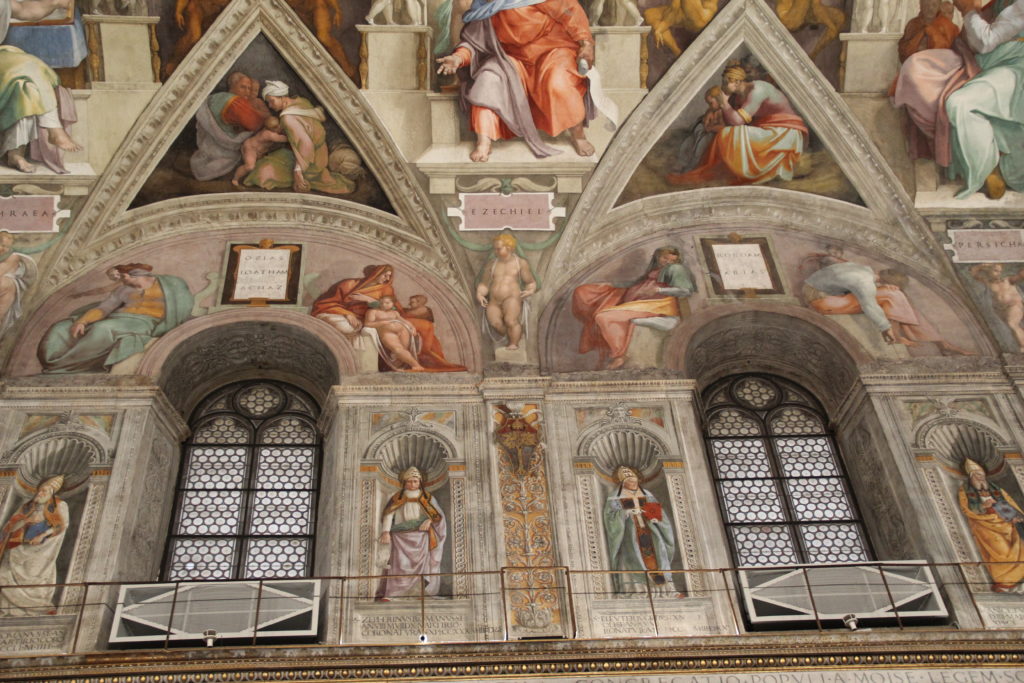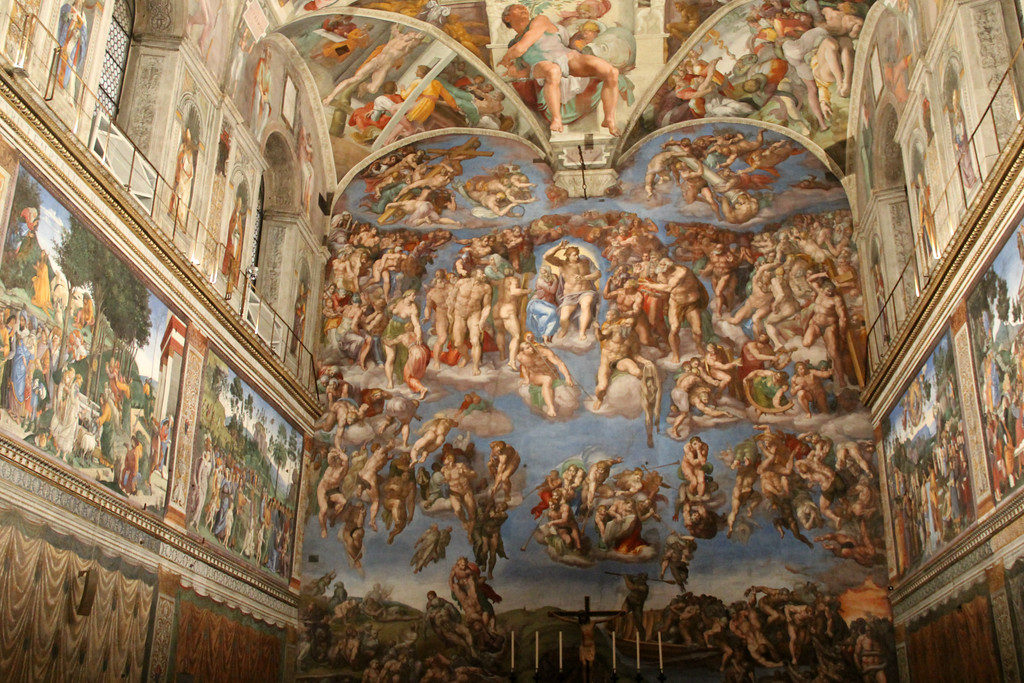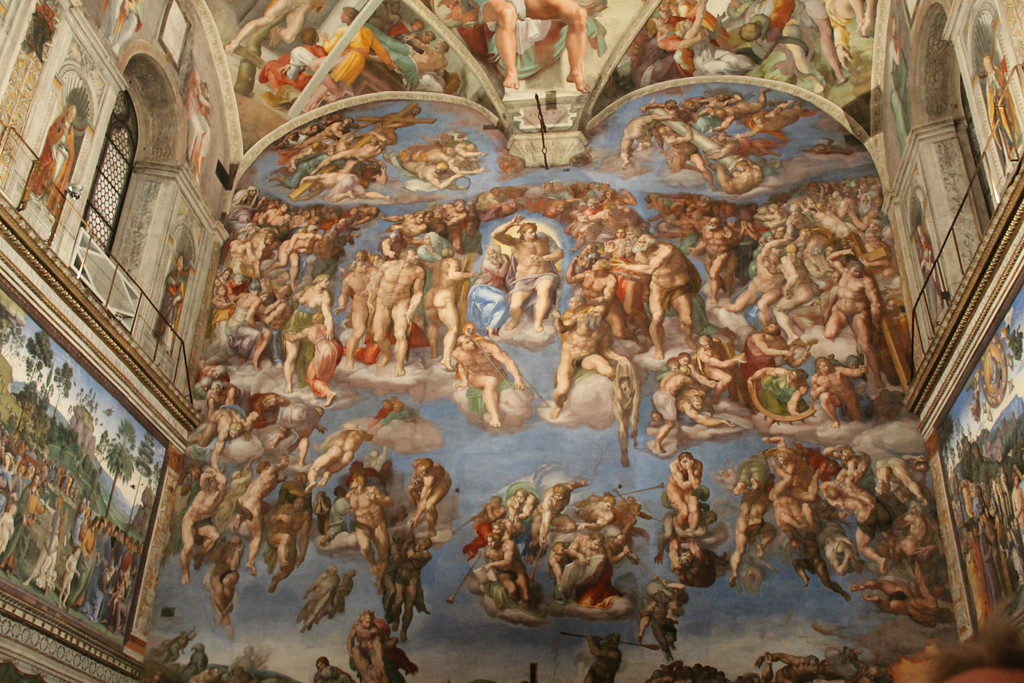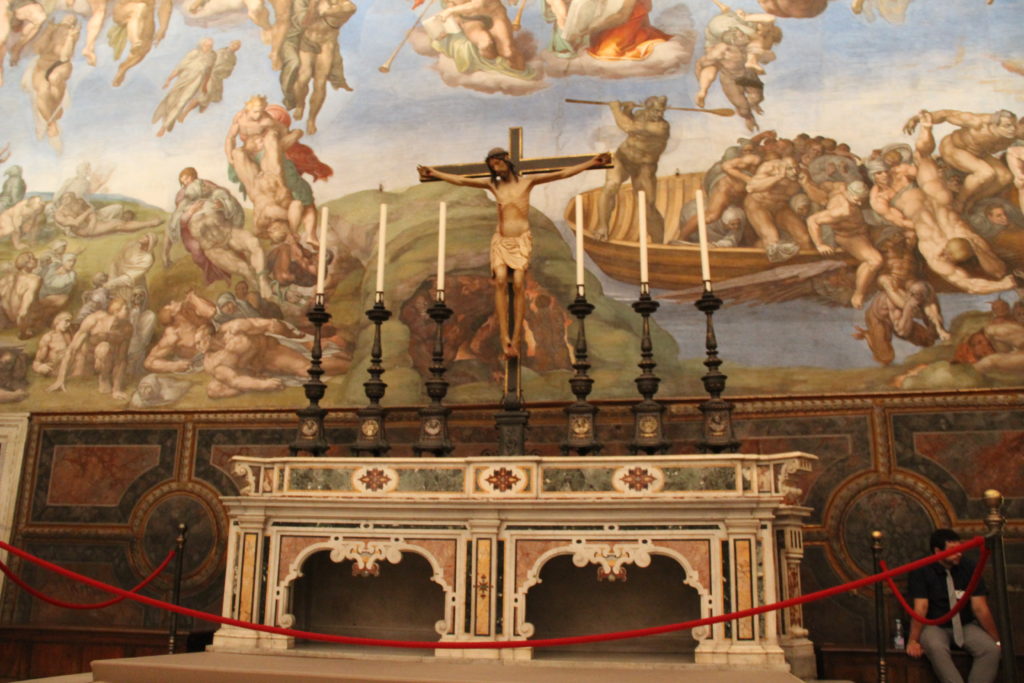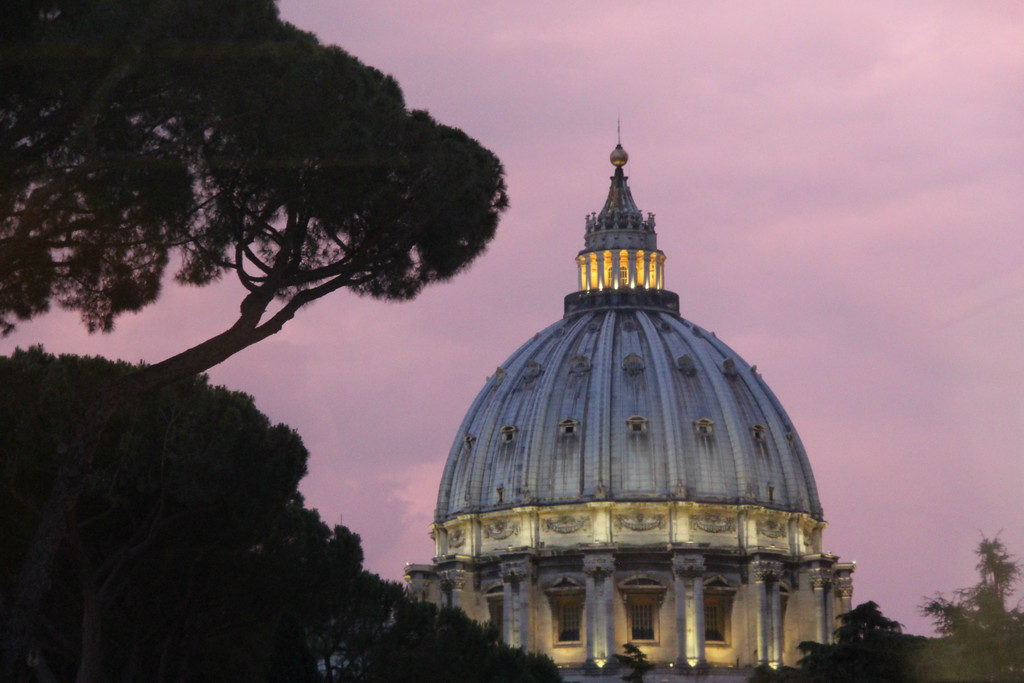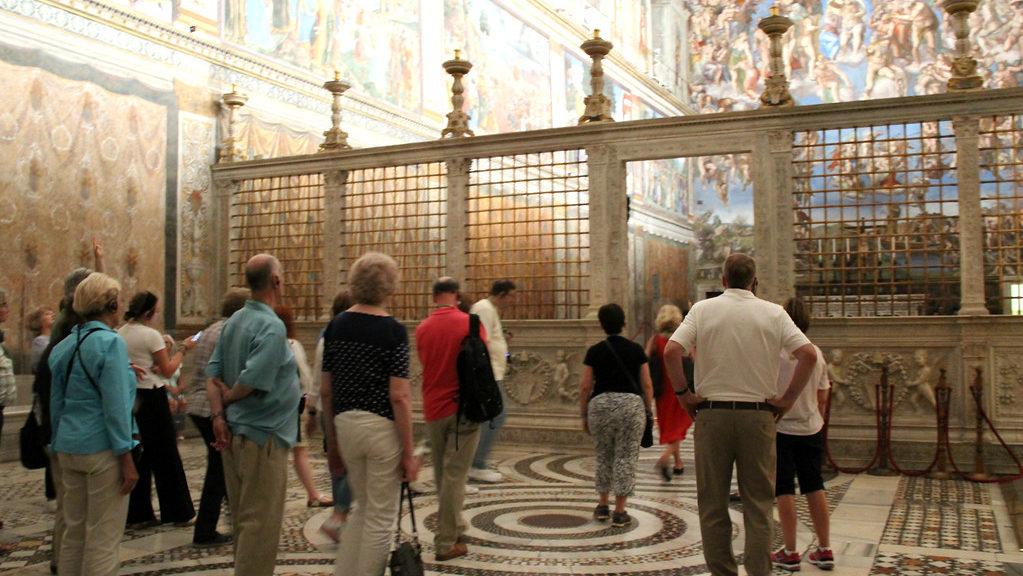
Vatican City: The Vatican Museums and the Sistine Chapel
Tauck arranged for our group to visit the Vatican Museums and the Sistine Chapel after hours. This had the great advantage of not needing to deal with huge crowds, estimated at 25,000 people per day. The pictures below are ones I took in the Vatican Museums. The first is the ceiling in the Gallery of Maps. The ceiling has paintings depicting the history of the Catholic Church and the lives of saints.
The next two pictures are paintings found in Raphael ‘s Rooms. The first is entitled “The School of Athens.” Raphael, a contemporary of Michelangelo, painted this fresco. Plato and Aristotle are debating the merits of philosophy and science. The second fresco, also by Raphael, is entitled “Disputation of the Holy Sacrament.” Heaven is represented in the upper part of the picture while theologians stand on either side of the earthly altar in the bottom part of the picture. A monstrance, which holds the host in the Catholic Church, sits on the altar. The theologians are discussing transubstantiation, which is how ordinary bread and wine become the body and blood of Christ. We also visited the Vatican Museums as part of our Classic Italy tour (in 2013). You can find my pictures from that trip at https://sharingtravelmemories.com/vatican-museum-and-sistine-chapel/
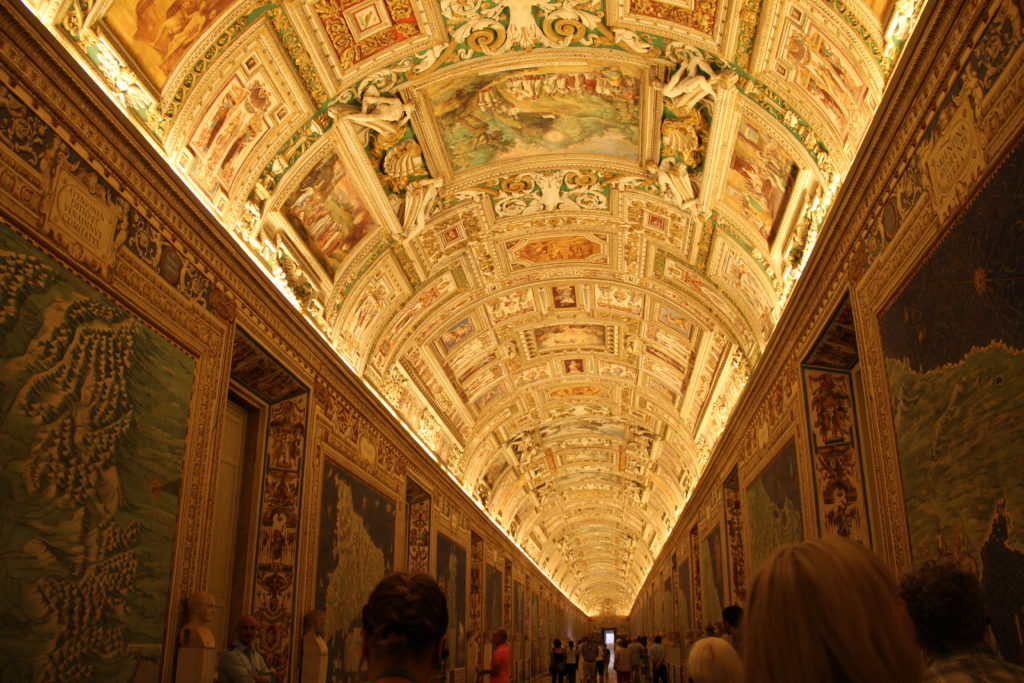
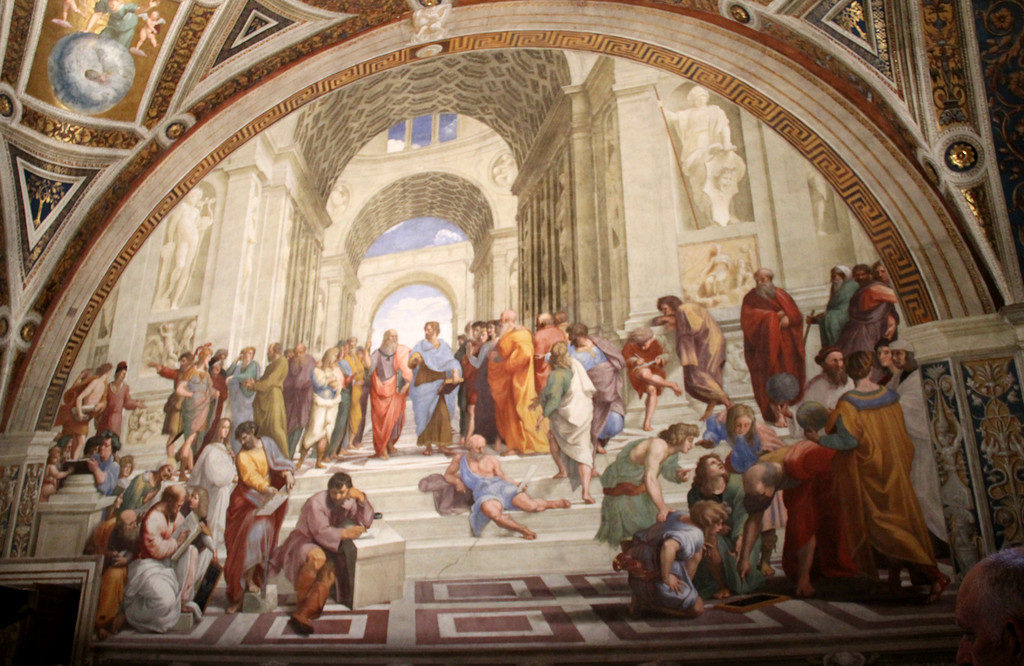
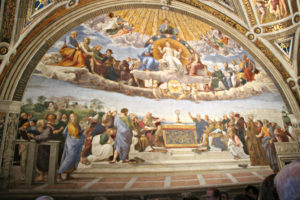
We were also able to visit the Sistine Chapel. When we last visited, we were not allowed to take pictures. We were very lucky on this visit because the guards gave us permission to take photographs. The Sistine Chapel is where a conclave is held in which cardinals elect a new pope. The first three pictures were taken in the back section of the Chapel. There were many paintings. The second picture is one of those paintings, a fresco depicting the Last Supper. It was painted in 1481-82 by Cosimo Rosselli. Jesus sits in the center surrounded by the disciples. Judas sits on the opposite side of the table. The last picture in this section is a closer view of Judas – a demon (I have circled it in yellow) is speaking into Judas’ ear.
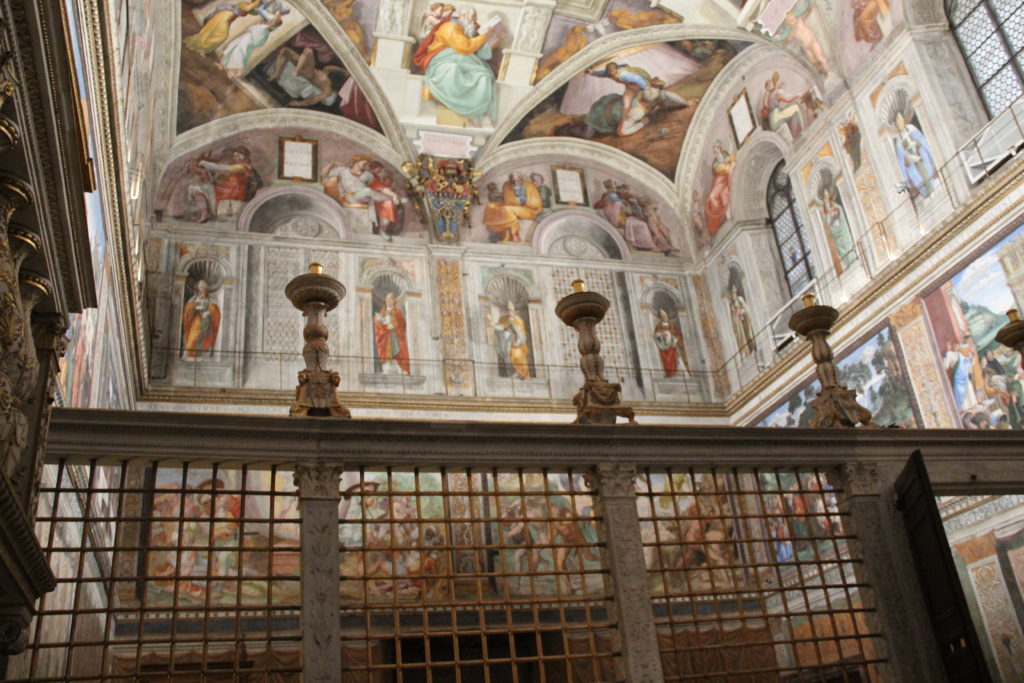
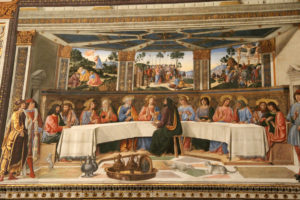
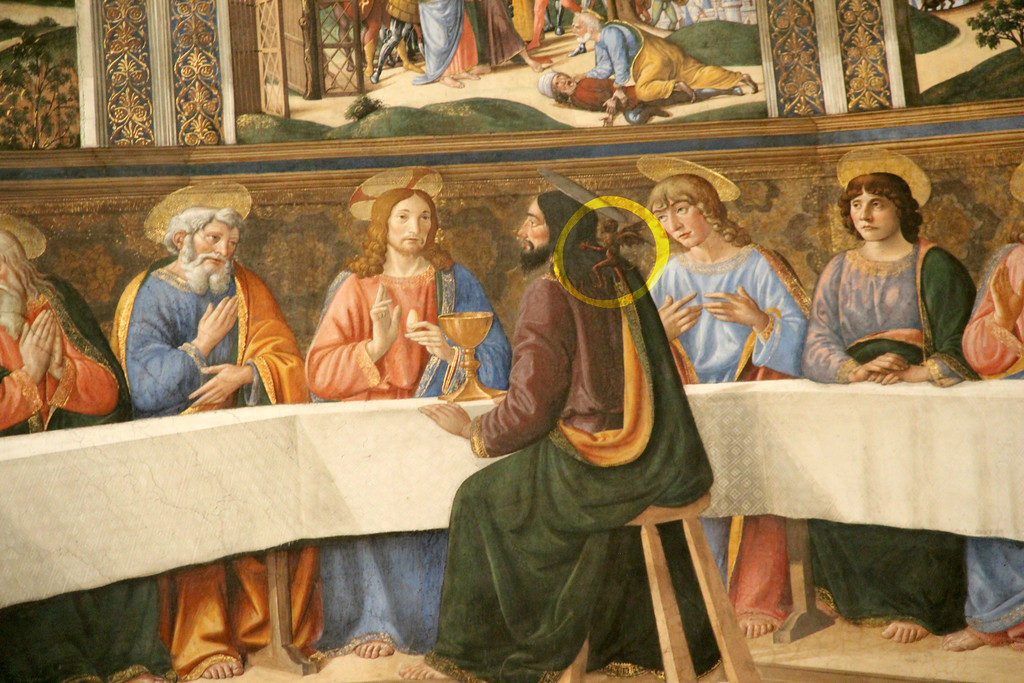
Of course the Sistine Chapel is most famous for Michelangelo’s ceiling. The Sistine Chapel had been built on land that was marshy and over time, one of the walls began to shift. Repair work was done, but damaged the ceiling which had been previously painted in blues with stars to resemble Heaven. Pope Julius II wanted the ceiling to be repainted and chose Michelangelo for the work. Michelangelo saw himself as a sculptor and hadn’t worked on frescoes for 15 to 20 years (when he was initially trained in this form of art). He went to Florence, refusing the commission, but was eventually persuaded to go back to Rome. The story of Michelangelo and Pope Julius II is quite intriguing. If you are not familiar with it, you may want to check it out. There is also a film, The Agony and the Ecstasy, which you might enjoy.
The work as originally conceived was to be the twelve apostles. Michelangelo wanted to paint the stories in Genesis and convinced Pope Julius to let him do this. He had scaffolding built and completed much of the actual painting on his back. Frescoes involve painting on fresh (wet) plaster. Generally the artist can work on about 10 square feet at a time – the ceiling is just over 5,000 square feet so you can imagine the complexity of the work. And the people viewing the frescoes would be standing nearly 60 feet below them so Michelangelo had to take this into account as well as he considered the size and amount of detail to put into the figures. It took Michelangelo four years to complete the ceiling; it was finished in 1512. The highest part of the ceiling features the stories from the Book of Genesis. Ancestors of Christ and prophets are also pictured on the ceiling.
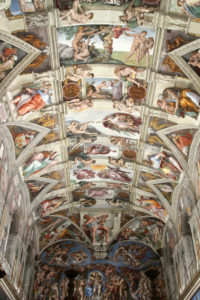
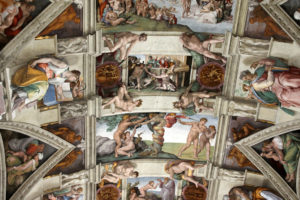
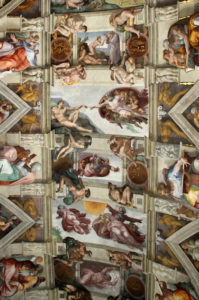
There are nine stories of Genesis on the ceiling. I have included close-up pictures of three of them. The first picture in this section is the creation of Adam. God is extending his finger to Adam’s hand to give him life. Also interesting is the woman and child by God. Some have thought this was Eve looking on, but others suggest it is the Virgin Mary and Christ Child (http://www.michelangelo.net/creation-of-adam/ ):
The obvious meaning of this painting has everything to do with the creation of man and the start of the human race, but looking deeper, this painting is about the relationship that the creator has forged with his creation. By simply stretching out his arms, God creates Adam and points out the Christ child as Adam’s savior. Here, the creator is truly all knowing. He is about to bestow Adam with everything that he will need, but God has already seen the fall of man after temptation from the devil. He, therefore, anticipates this fall and presents a ready solution through Christ.
The next picture is the fall of Adam and Eve. Our local guide said it looks as if both Adam and Eve are reaching for the forbidden fruit – Eve simply got to it first. The final picture in this section is of Jonah. He appears to be looking up, encouraging us to look at the rest of the ceiling.
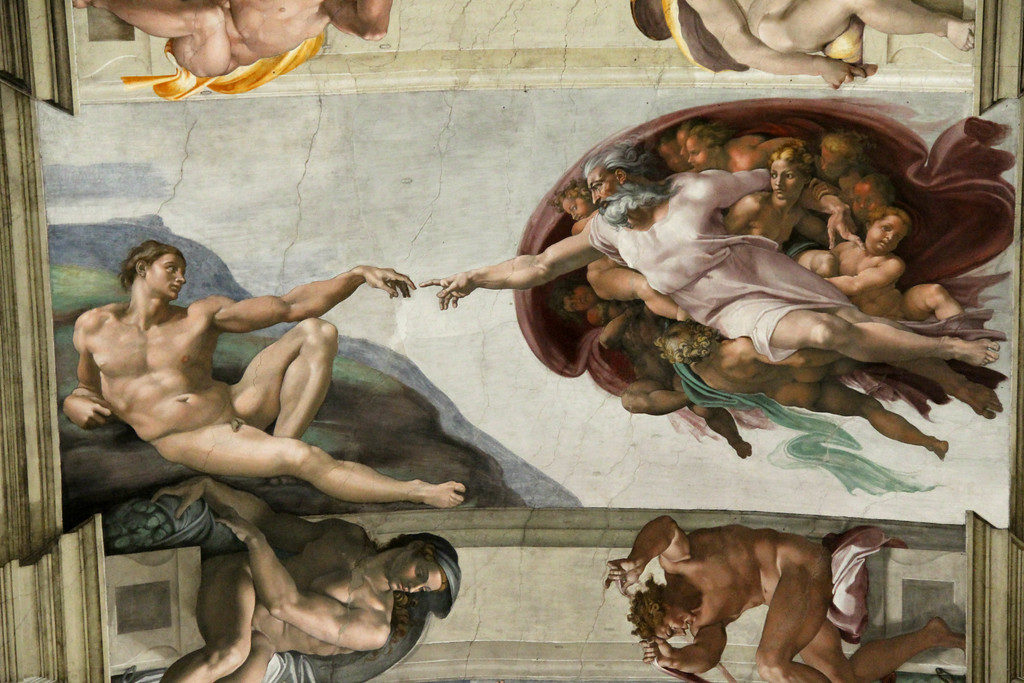
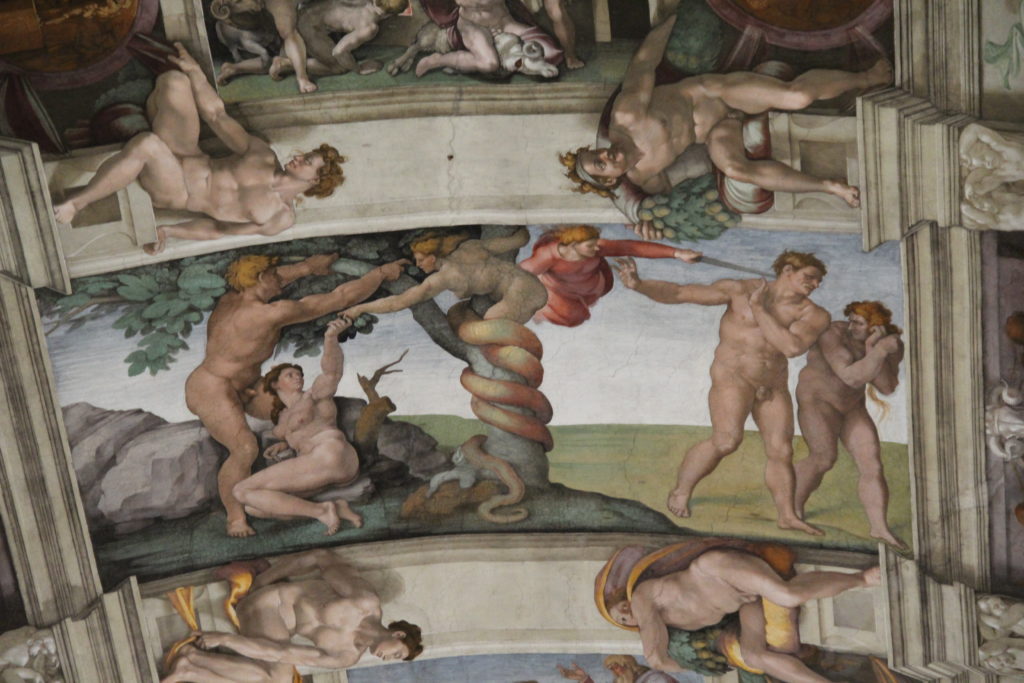
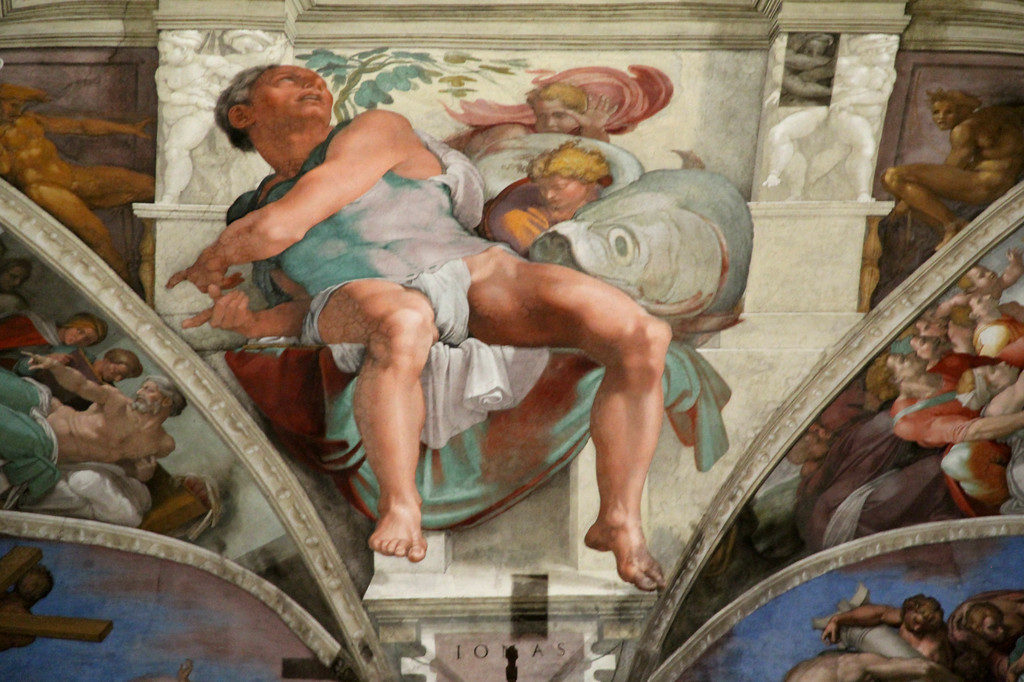
The first picture below shows part of one of the walls in the Sistine Chapel. Paintings of popes are on the sides of the windows. The next two pictures are of the Last Judgement, the painting behind the altar. After Michelangelo finished painting the ceiling of the Sistine Chapel, he went back to his sculpting. But after several years, Pope Paul III asked him to paint the Last Judgement on the wall behind the altar. Michelangelo began the fresco in 1535 and completed it in 1542. Christ is pictured in the middle of the fresco. Angels with trumpets are in the center near the bottom of the fresco. Two of the angels are holding books – the smaller book records the names of those who are saved and the larger book those who will go to Hell. There was criticism raised about the fresco on moral grounds. The figures in the fresco were painted as nudes and there were accusations it was pornographic. Some called for the painting to be painted over, but after Michelangelo’s death, draperies were added to hide genitals on some of the figures as a compromise. The fourth picture is of the altar in the Sistine Chapel. The last picture is of the dome over the St. Peter’s Basilica – we saw the dome through a window as we left. The Sistine Chapel is truly remarkable – and it was a wonderful opportunity be able to see it.
